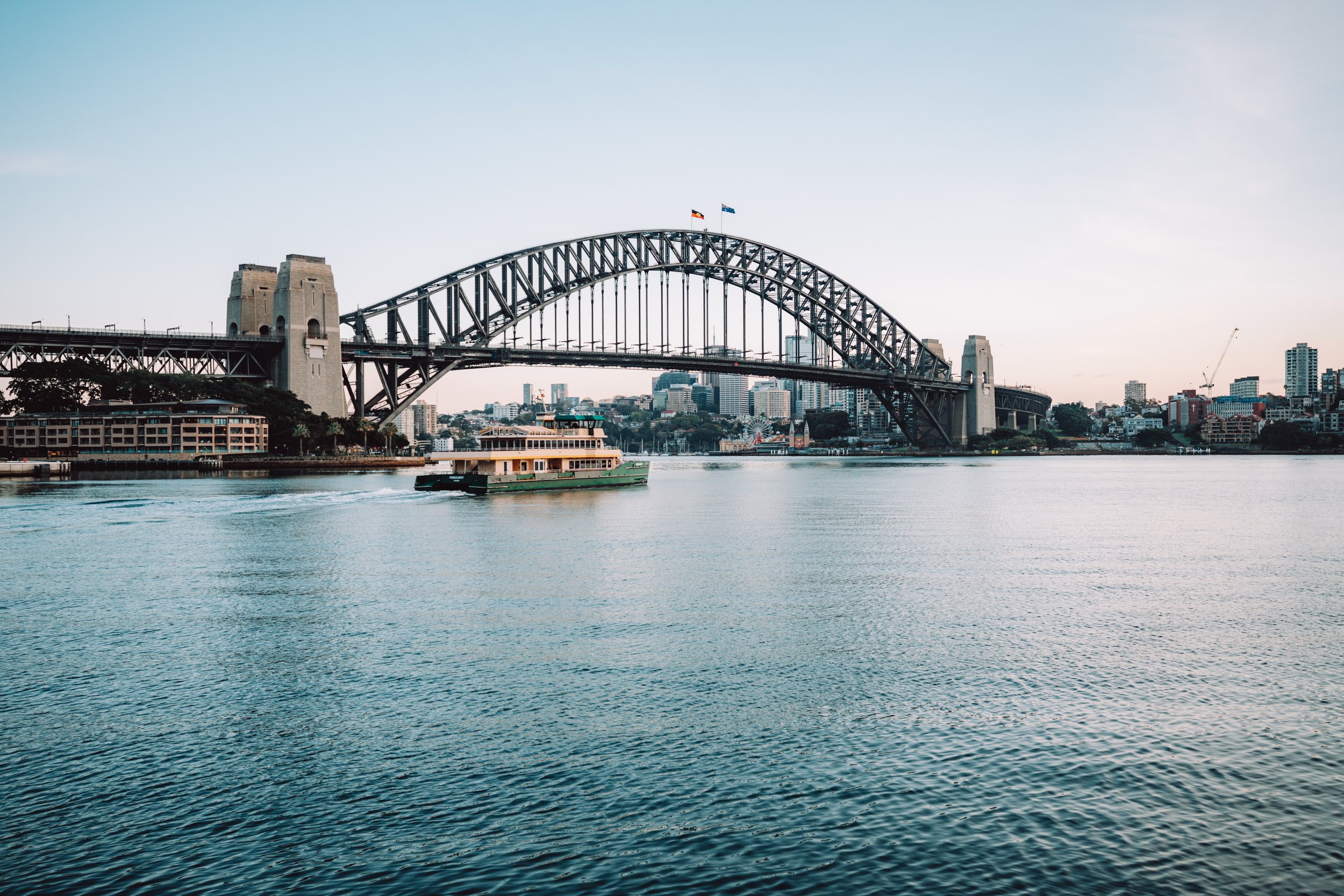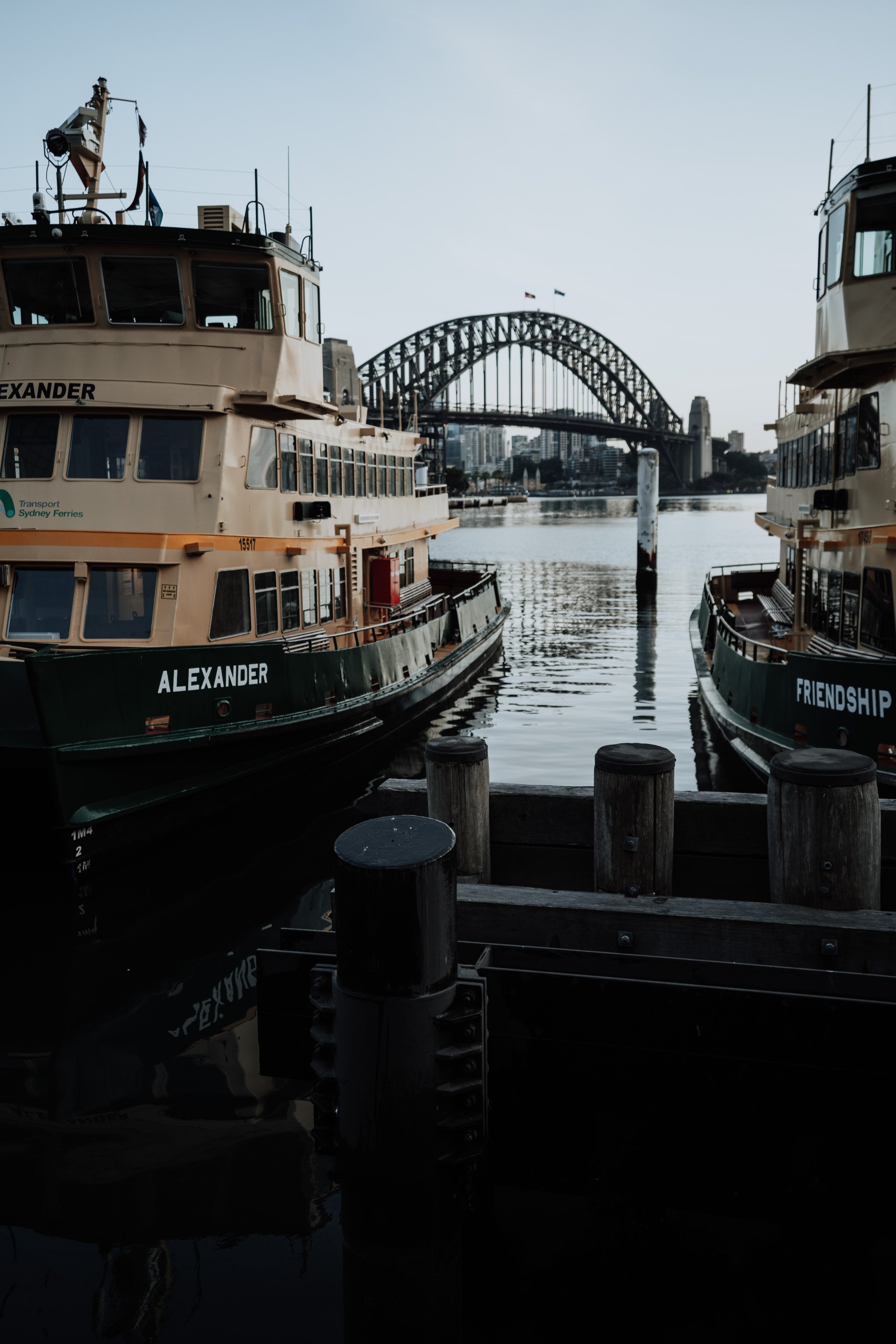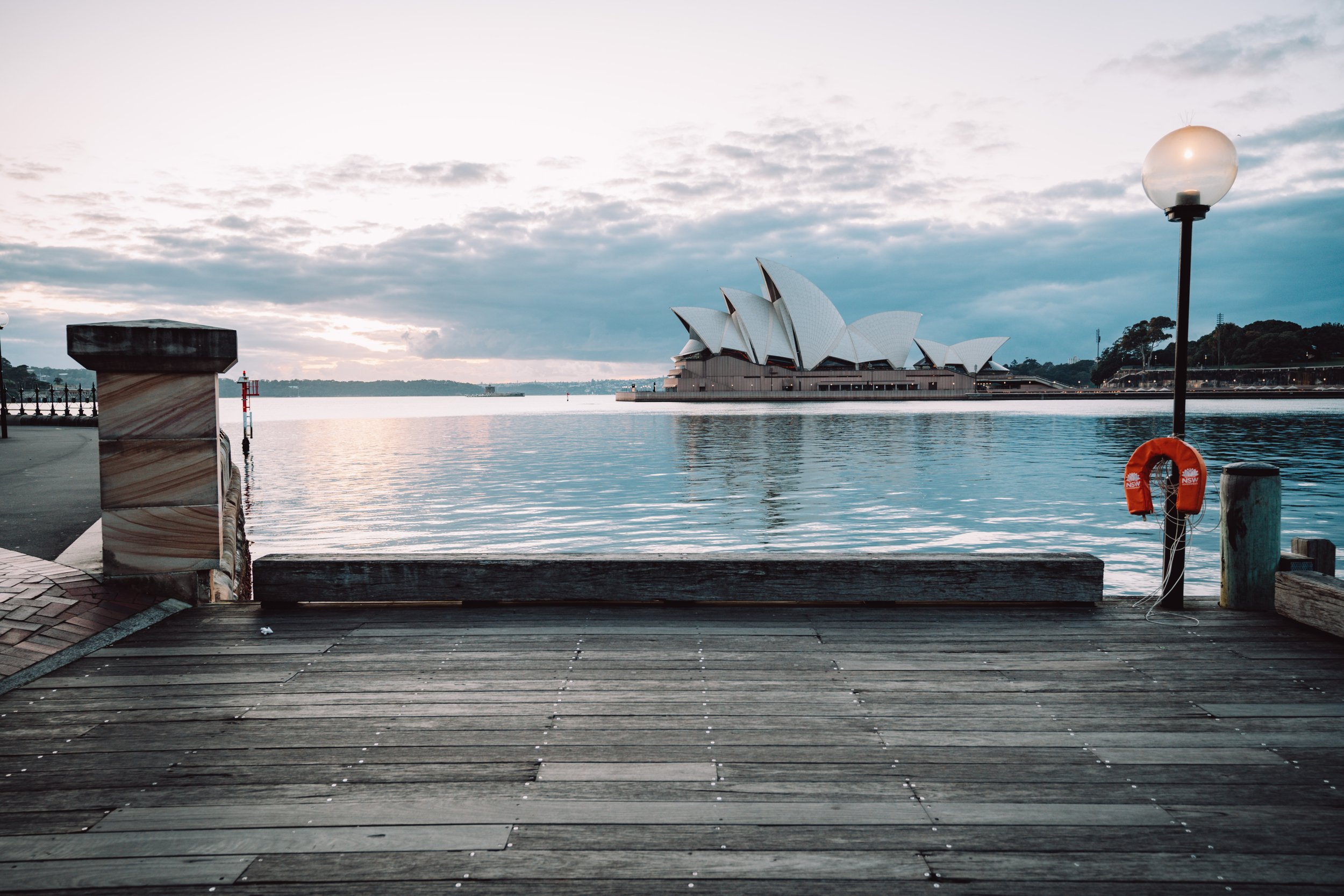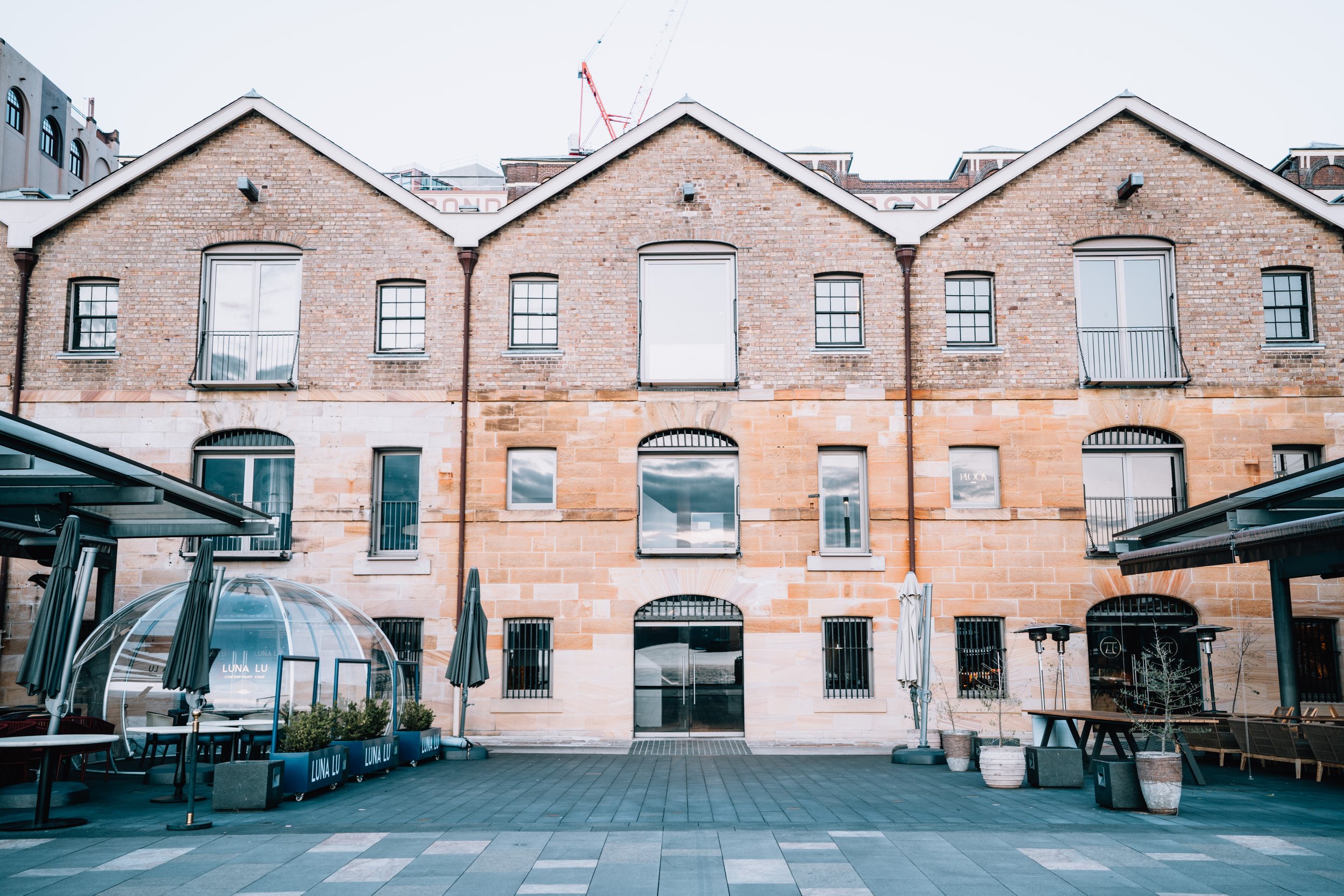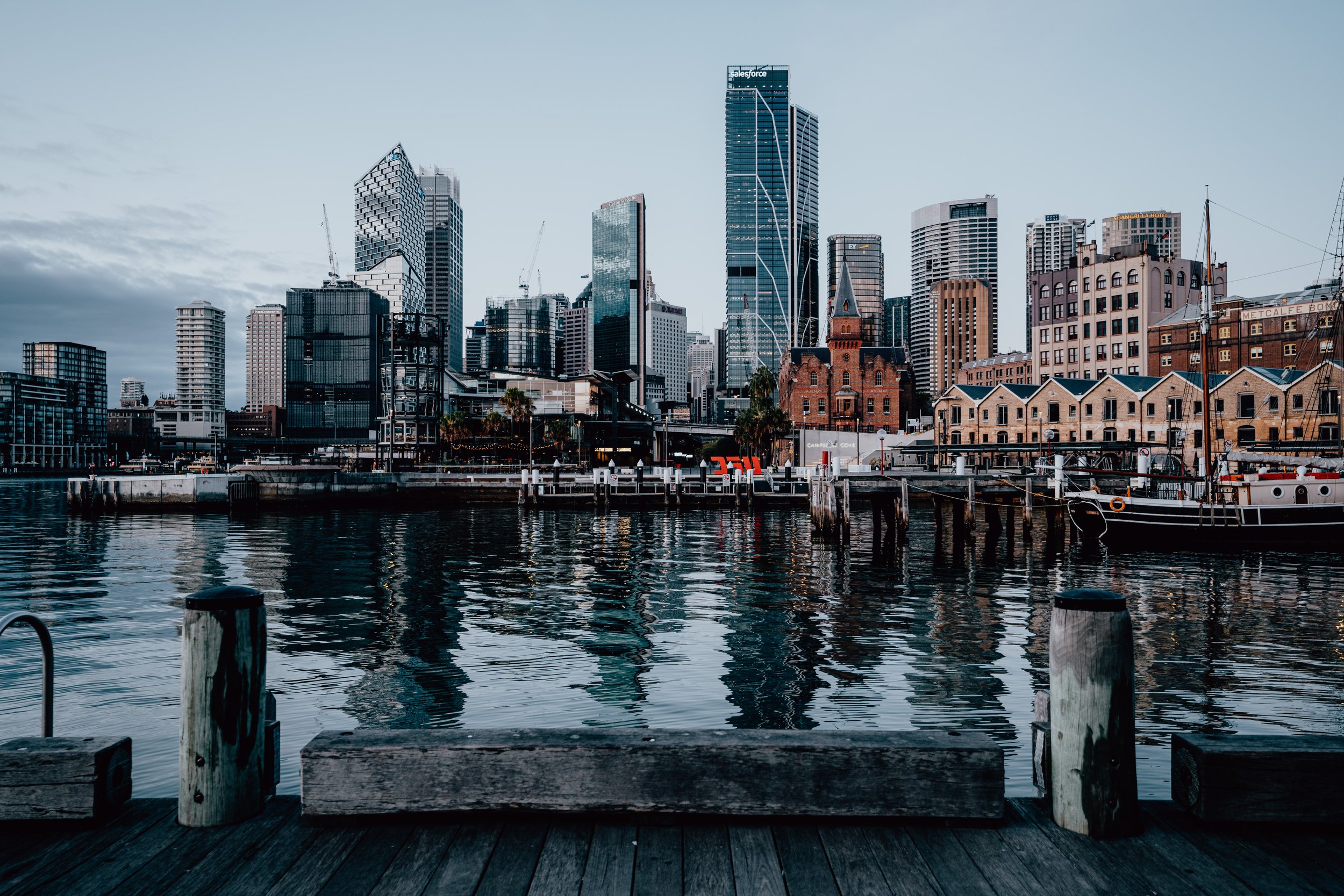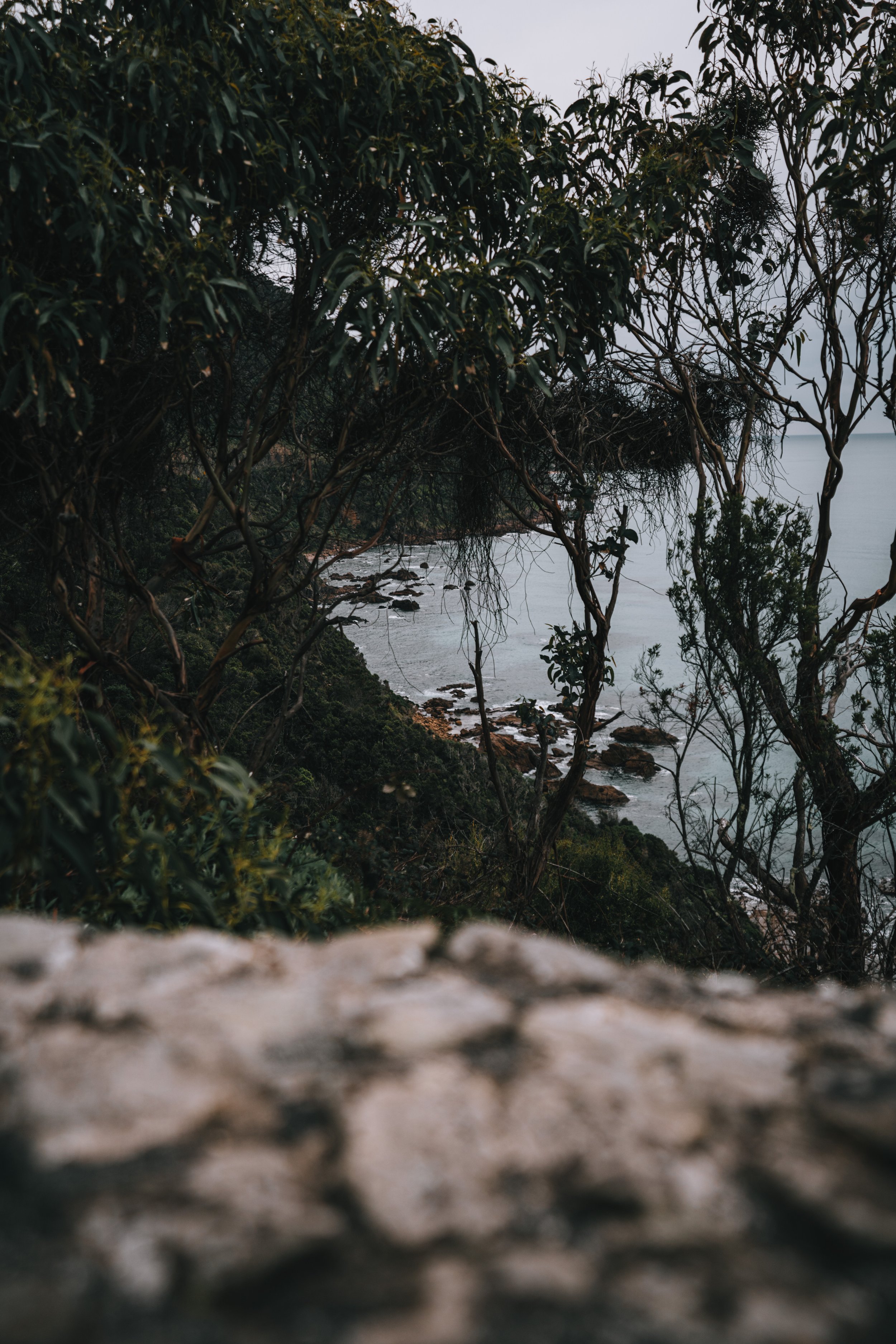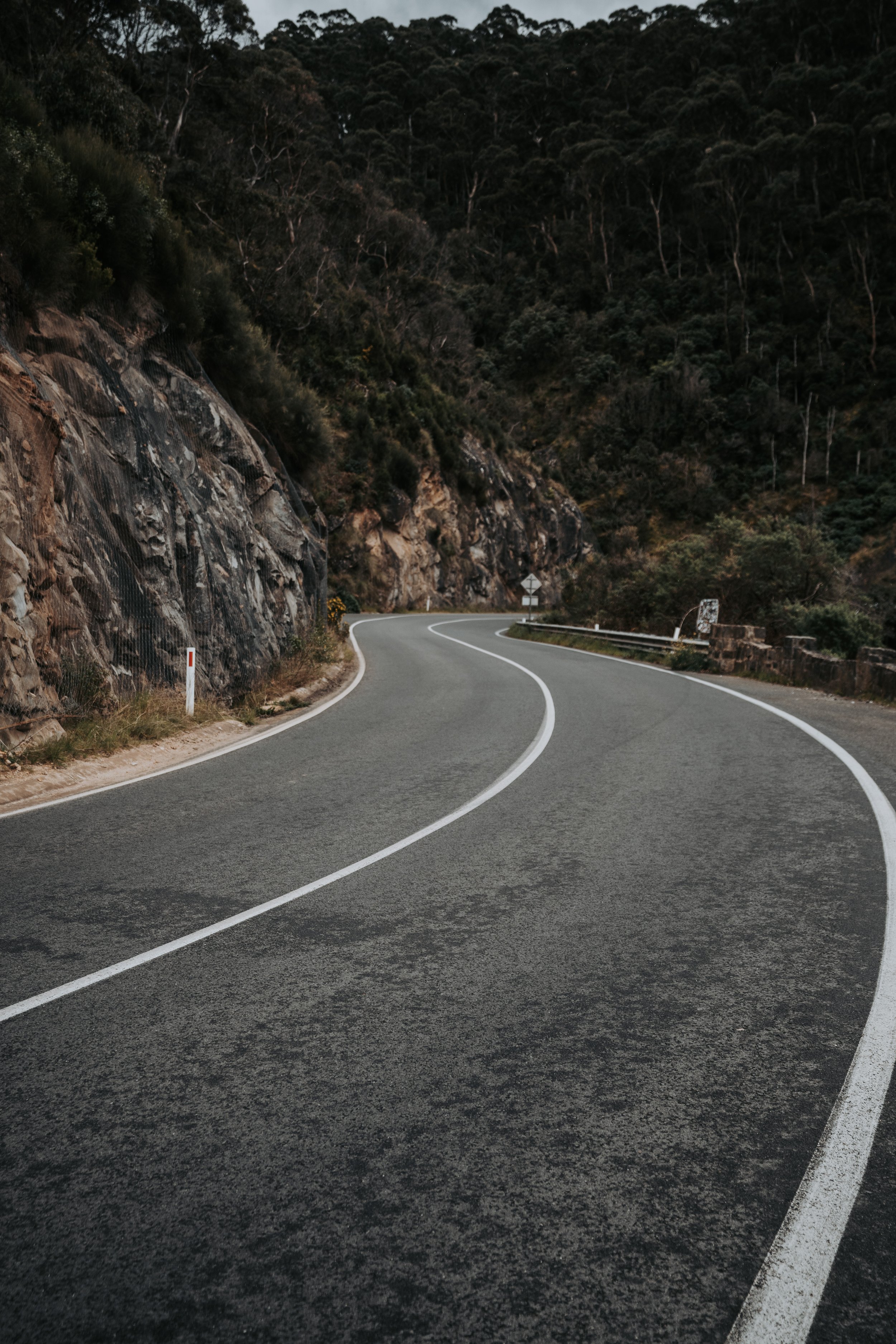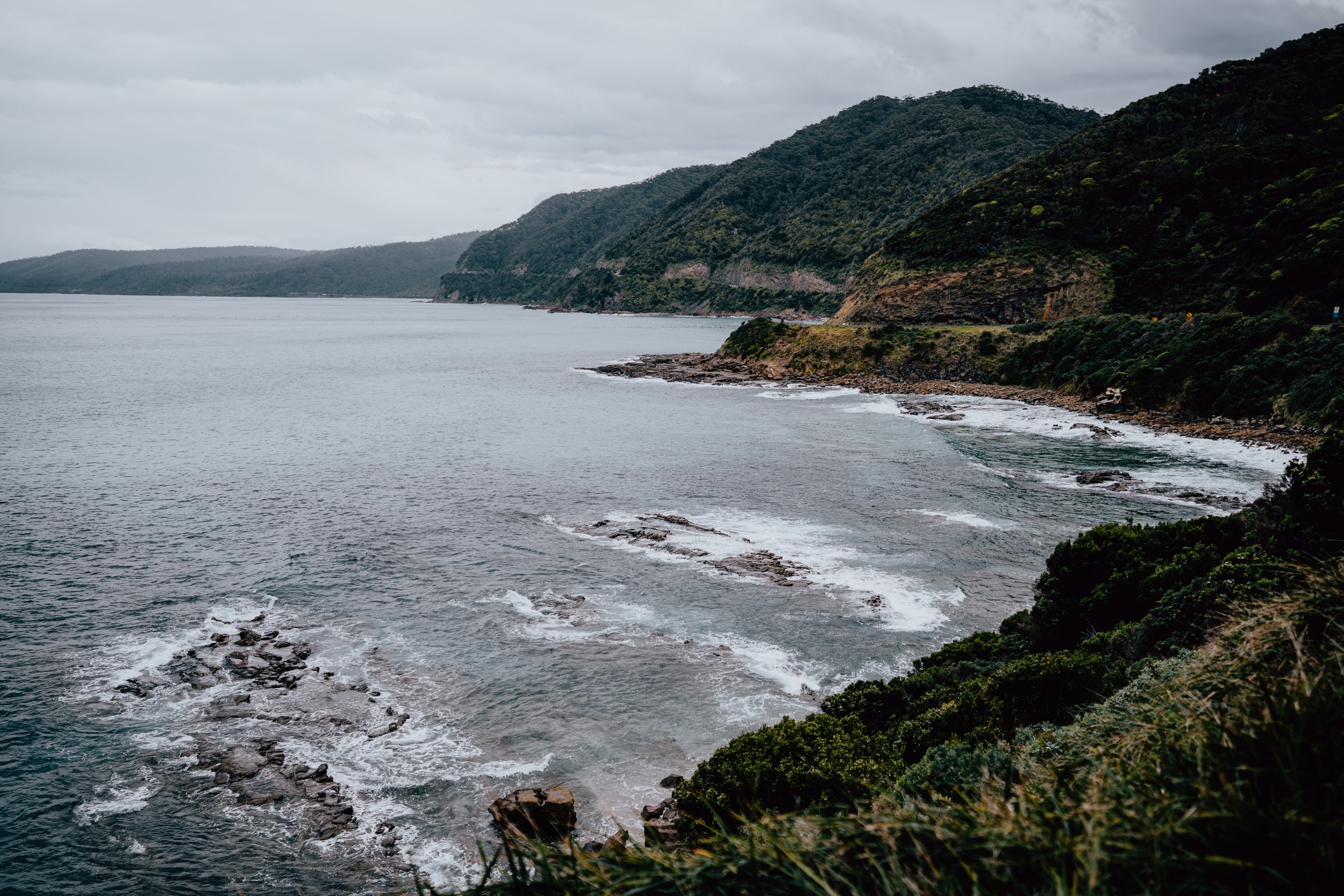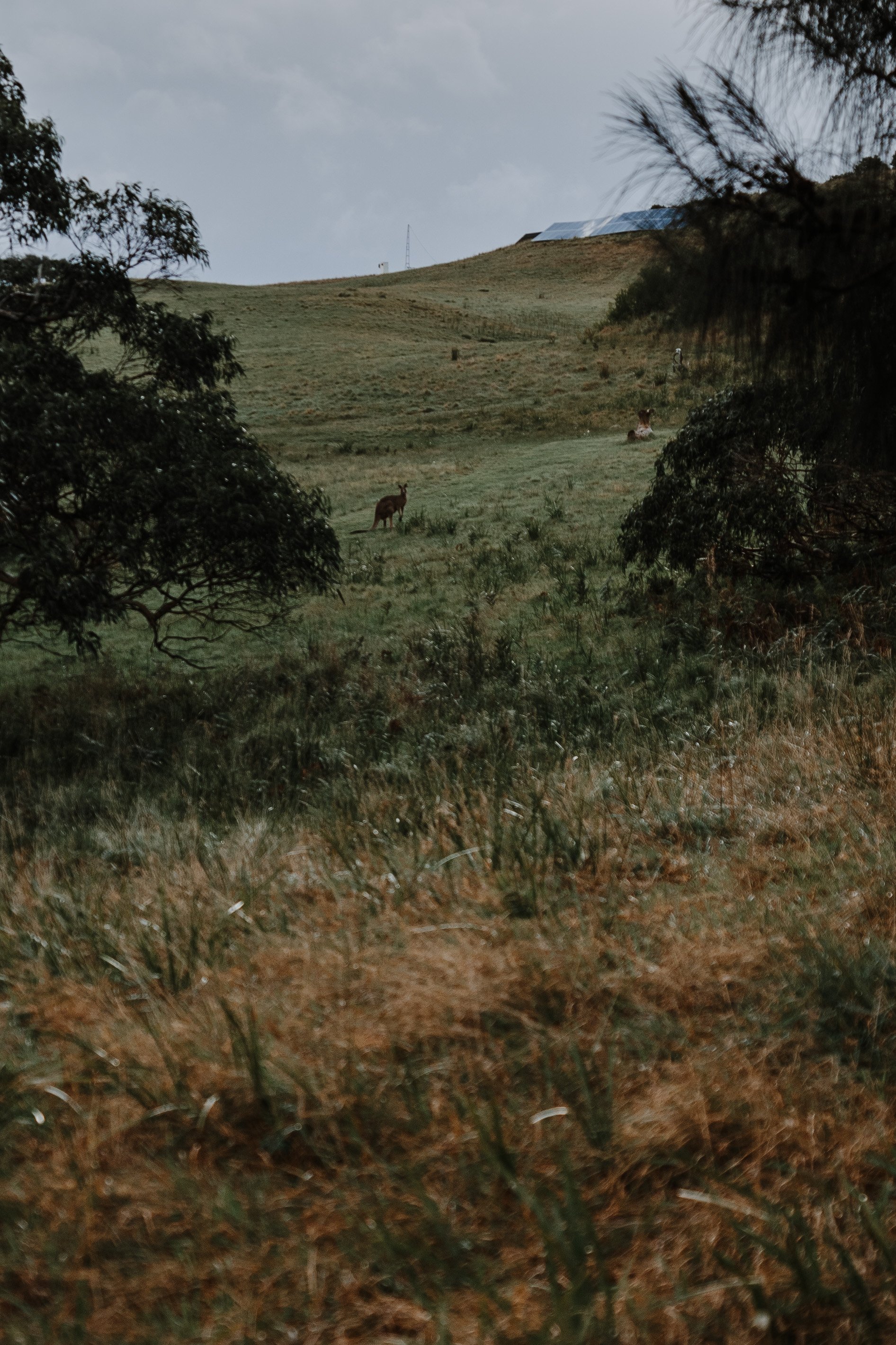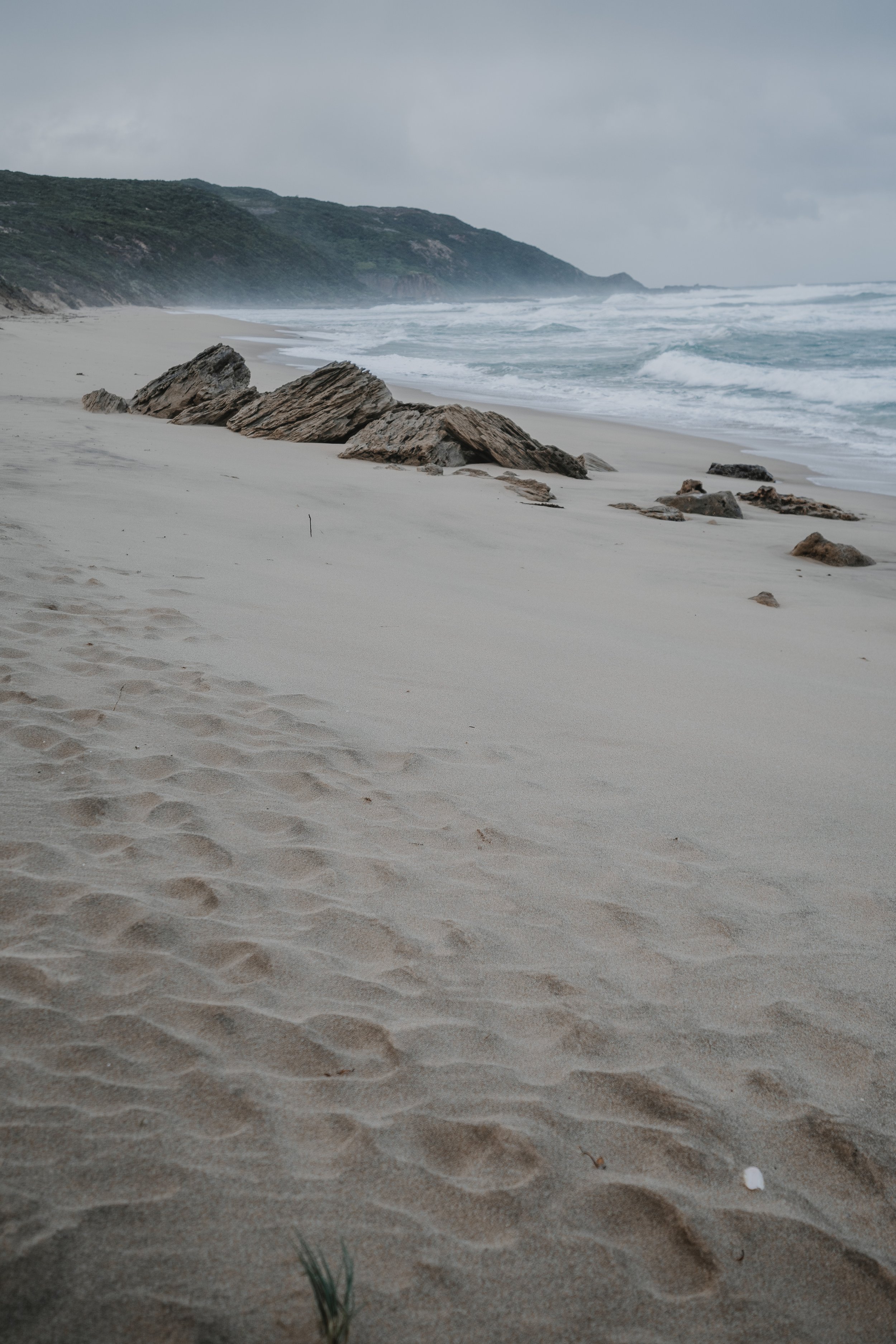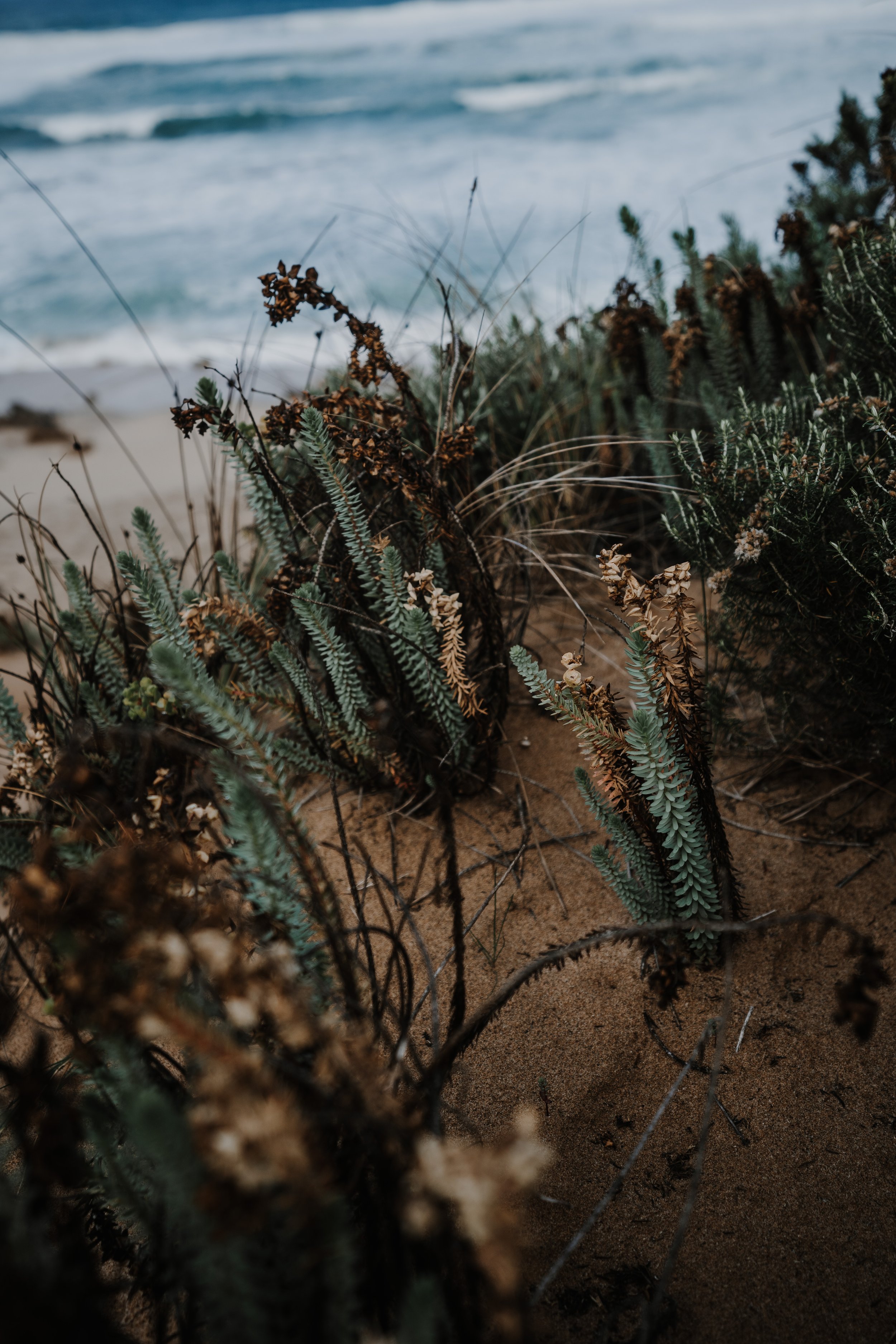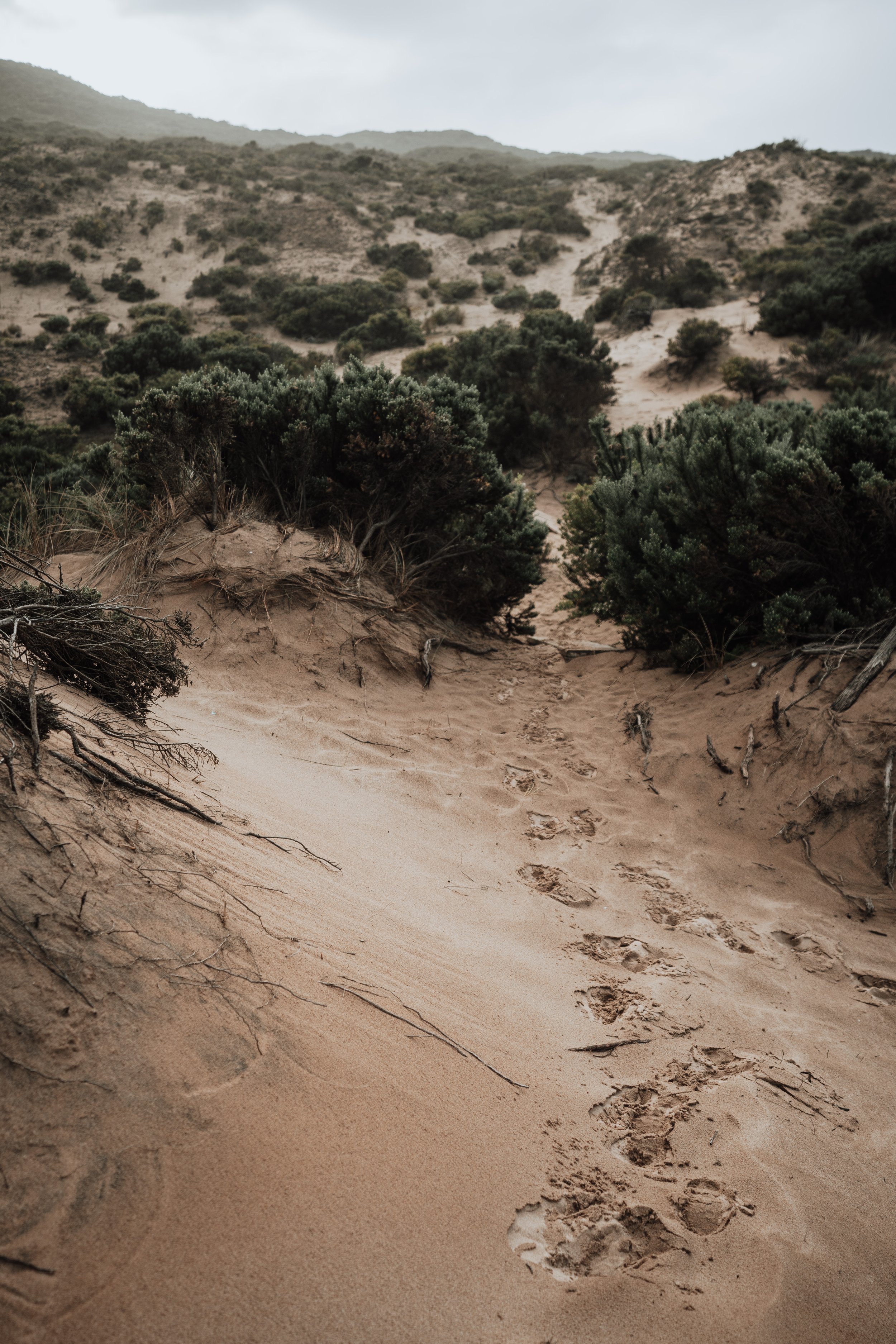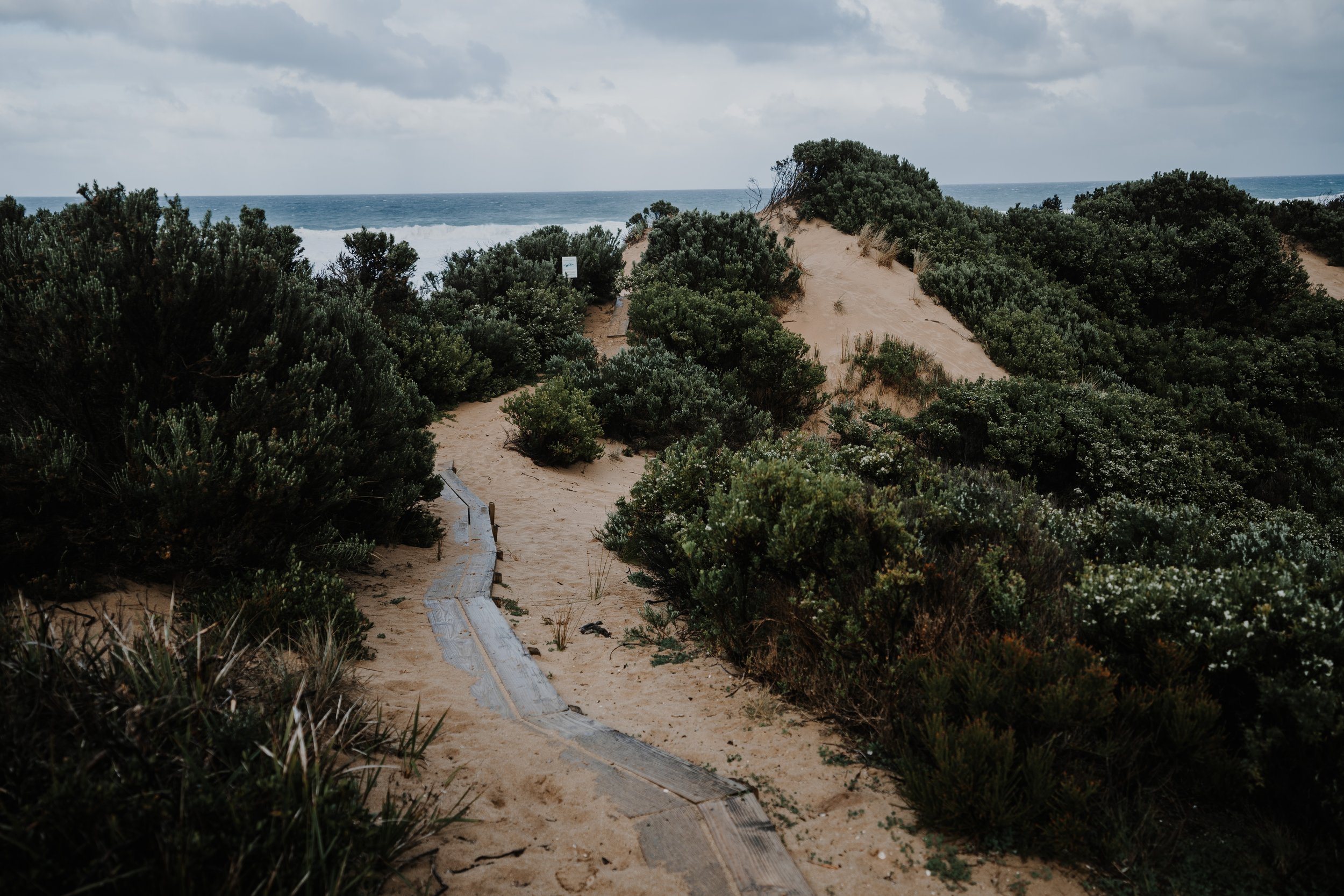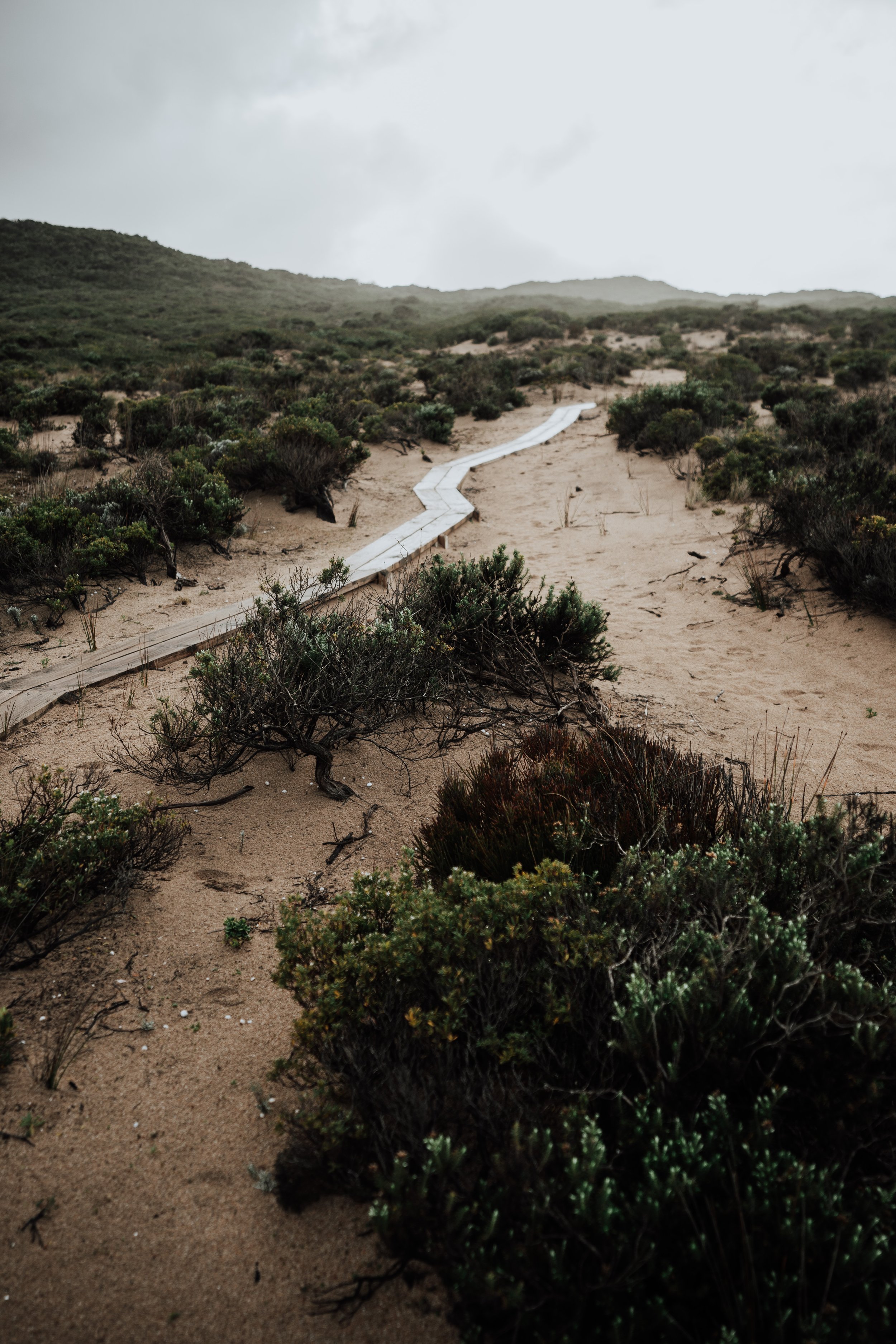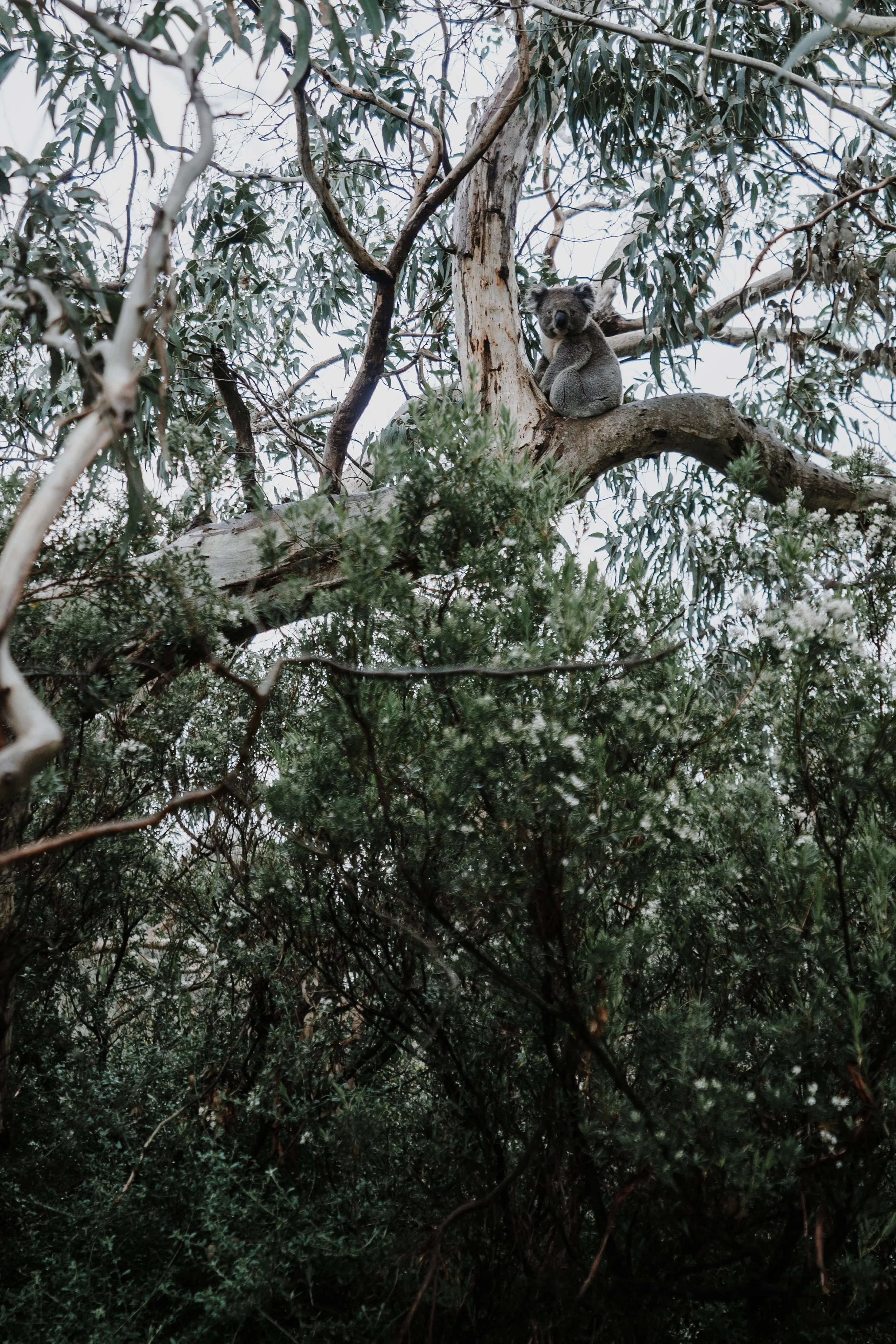A New Hemisphere

Some of the best experiences are unplanned—the ones where you show up with only your things and no preconceptions. You haven’t had time to build up expectations in your mind. It’s just you and the day ahead of you.
Following a marathon-sprint of a summer, I was craving just that—some time away, new landscapes to explore, and space to be still. On the tail end of my last work trip, I had flipped through the “flight loads,” or open seats, to various destinations and came across a certain anomaly that more than piqued my interest. If it worked, it would be our most ambitious quick trip to date. If it didn’t, it could leave us stranded further from home than we’d ever been before. With a trip trade and nine days off, it was worth a shot. I walked into the apartment and asked Tori, “Do you want to go to Australia tomorrow?”
Less than 24 hours later, we found ourselves sitting in the international terminal at LAX watching the planes go by as the last light faded across the Pacific. Between us and our destination lay 7,500 miles of water, a trip that was impossible until recent centuries and one that now took only fifteen-and-a-half hours. At least that’s how I framed it as I thought about the prospect of sitting in an airplane seat for that long—a new record for each of us. After arriving at our gate, we realized we’d missed our names over the “loud” speakers a couple of times. The gate agent was friendly and said he had us in premium economy but if we wanted to wait, he might have business come available. We said we’d wait. Number by number, each group boarded until it was just a few stragglers. I watched the clock countdown to final boarding as the agents made the last “all-calls” throughout the terminal. No signs of the missing passengers. “I can release the seats in two minutes and forty-eight seconds.” “That’s a lot shorter than fifteen-and-a-half-hours. We’ll wait,” I chuckled. The seconds ticked by. Nothing. They quickly swapped our boarding passes, we scanned in, and they shut the door behind us. At the main cabin door, a flight attendant directed me to the left for the first time, and I shuffled my way down the aisle to the first lie-flat seat I had seen that wasn’t on YouTube or Instagram. I settled in in disbelief as the crew made their final preparations, and before I had time to find the seat controls, we were off. Our voyage to the other side of the world had begun.
Flying west has always been easier for me, but this trip would span fourteen time zones and the international dateline. We took off on the thirty-first and wouldn’t touchdown again until the second. To make the transition a little easier, the cabin crew kept us awake. It was approaching 2:00 am for me as dinner was served with glassware and white linens. After dinner, it was coffee and tea, and I sat and read as the miles ticked by and my awareness of time began to fade.
The first light of day came many hours later. I awoke to the soft clatter of plates in the galley and the still surreal sensation of stretching out completely horizontal on an airplane. After a short breakfast, I gathered my things and penned out my customs declarations. The clouds began to break, and my first views of the continent came into focus: the white sails of the opera house on the harbor and the skyline below. The plane banked, and each time the wings rolled level, a different scene appeared—forests, rugged coastlines, rain showers over open water—until the wheels touched the pavement. We were finally here.
I opted for a quick Uber into the city rather than driving. Something about the jet lag plus early morning rush hour plus driving on the left side of the road didn’t seem like the best plan. On the ride downtown, our driver remarked about his visits to the States and his surprise that Americans rarely left their own borders: “I guess it’s because Aussies are given their passports with their birth certificates.” He also recounted one particular American rider who was puzzled that the U.S. dollar wasn’t accepted internationally. “I’ve used it in Hawai’i. I don’t see why I can’t use it here,” the guy grumbled. “Oh, that makes me sad for my culture.” We all laughed.
We arrived in the country with no plans other than the single night’s reservation I had made just before departure in LA: an old pier under the famous Harbor Bridge that had been renovated into a boutique hotel. I’ve made a habit of paying for hotels under a certain mark to build points to redeem for places like this that we couldn’t normally afford. When we arrived, I had intended on just dropping our bags, but the front desk insisted on finding us a room and checked us in at 8:00 am.
When acclimatizing to a new time zone, I find the best thing to do is to forget about your time at home. Whatever time is displayed on the phone is what time it is there, so the worst thing we could do was take a nap. To remedy that, we set off on foot for a cheeky coffee and a long walk. The road wrapped under the Harbor Bridge to an area called “the Rocks,” remnants of the original eighteenth-century British settlement. Cobblestone streets meandered through facades that looked like they belonged in Amsterdam or Copenhagen. In one back alley, we found something we could never find in France: a bakery that served incredible French bread and good espresso beverages. The bakery had a storefront with all the pastries you’d expect to find in a French boulangerie, and out of the back, they sold take-away espressos through a window. We took our fresh finds and sat by the harbor while the native birds gave us side eye at each dropped crumb.
The Sydney skyline is modern and rises high above the harbor quay and old town. Opposite the Rocks sits the Opera House and just past that, a second inlet with the Royal Botanic Gardens spanning the length. Locals walked or jogged through the network of paths in the cool, late-winter breeze. We found a bench overlooking the city and the Opera House and sat soaking in the sun and the scene. Shadows of clouds painted the scene in different lights as the ferries buzzed from one bank to the other. It all felt surreal.
The following morning, I woke up well before sunrise and decided to go snap some photos in the early morning light. It was a Sunday, and the city was still. Runners made their way around the bends of the harbor in soft steps and hushed voices while fishermen huddled and tried their luck in the early morning chill. The first rays cut across the tops of the Opera House, and I stood in its shadow taking it all in.
After another back-alley visit produced another brown paper bag full of French bread, we caught an Uber out to the coast for a laidback walk along the sea. There are paved trails connecting several of the beaches around Sydney, so we opted to start at the famous Bondi Beach and work our way south until we got tired. It didn’t take long to come across Bondi Icebergs, a swimming club perched dramatically in the crashing waves of the Pacific that welcomed anyone willing to brave the 18°C waters.
Further down, the crowds began to thin as the trail meandered its way through the rocky outcroppings. We found a quiet ledge above the crashing waves and watched the half dozen surfers hang between strong currents and rocks occasionally threading a wave through them all. It’s these moments that are some of my favorites: ones with no where to be, no plan, no destination in mind—just pure exploration, carving your way forward, and taking time along the way.
I’ve always been drawn to the edges of the Earth—the few places that still feel raw and untouched—maybe to see things as they have always been or maybe to feel small. I had another ambitious idea, one that would take us away from the mild, sunny winter days of Sydney to some place less forgiving. The next morning, we found ourselves back at the Sydney Airport—not returning north or east—but continuing further south and further from home.
Along the southern coast just west of Melbourne lies a stretch of winding road built after the First World War as a monument to those sacrificed and for the recreation of those who remain. It’s called the Great Ocean Road, and it cuts 240 kilometers through dense rainforests and along jagged coasts connecting towns that boast some of the best surfing on the continent. The trip felt even more like an adventure as I slammed the car door in the cold, gusty wind and sat down on the right side of the car to drive for the first time on the left side of the road. I fly from the right, how hard could it be?
We exited the motorway and made our way through roundabout after roundabout toward the coast. I could almost feel my brain working harder trying to translate what I already knew to what I was experiencing. Strange how that works. Our destination that night was an off-grid glass hut situated at the southernmost point in Western Victoria where the kangaroos and sheep vastly outnumbered the people. The road climbed its way through dense ferns and California redwoods before shallowing out and descending gently through an endless sea of eucalyptus trees. It eventually turned to gravel then dirt before ending at a gate where a very exuberant conservationist named Maxwell was waiting for us. I labored to stand steady in the wind as he demonstrated the gate mechanism to me but was distracted by the first glimpses of any native wildlife: about four dozen waist-high kangaroos bounding through the field downhill. Maxwell was a self-proclaimed carbon farmer. He built off-grid luxury cabins on his property and used the proceeds to reforest the land and stabilize the ecosystem. His passion for the land was contagious; I was impressed as he named each landmark and recounted the exact number of days the sun set over the sea vs land. I had booked the stay for the design and the solitude, but I didn’t realize just how much the surrounding area had to offer. The cape in general had the highest concentration of koalas in the world, and the property was bordered to the south entirely by national park land. From the deck, you could see the Southern Ocean, and Maxwell told us of a private trail he had cut to join the national park trails that lead to a secluded beach otherwise accessible only by a nine-day trek from one road terminus to another. I made a mental note of this but was distracted by the dozens of kangaroos in the fields below—particularly by a fully-grown six-foot plus male who picked a fight with a deer and punched it in the face. I blinked twice as a stood behind the glass of our living area taking it all in.
That evening, I explored the grounds with my camera, taking in the scene from every angle. The glass tiny-house sat at the top of a clearing of rolling hills. At the lower end, a trail tunneled its way through dense forest beckoning with every twist and turn. Through the tops of the foliage stood white barren branches—manna gum trees that had been over consumed by koala overpopulation. Part of Maxwell’s work was coordinating with the state to relocate the excess population. Below, the sea wrapped around the cape disappearing into a mist. Whitecaps crested and pushed their way onshore—nothing obstructing the wind between us and Antarctica. As the sun began to settle on the horizon, I gathered up my layers , let my feet dangle from the deck, and sat as I sipped on my espresso. The scene grew more brilliant for a moment before waning as the sun hung partially off the horizon, red and pink partially obscured by purple clouds and mist. I closed my eyes content to let the cold wind brush across my face. Apart from the hurried pace back home, this was the quiet and solace I had been longing for. The simplicity of being in a moment that has been and always will be—the same. I sat in the quiet and cold, contemplating things bigger than me, until the last light had faded from the scene.
After dinner, we settled in. The wind howled and shook the glass. On the other side, the darkness slowly faded to reveal thousands of stars along the Milkyway extending to the horizon. Each time I awoke through the night, the scene would have moved slightly—us rotating just a little further beneath the heavens.
The next morning, the steam from my tea slowly rose as I contemplated the sheets of rain coming down outside—first on the horizon, then moving closer before obscuring the other end of the cape, eventually blanketing the entire hillside before passing. Then, it would repeat with maybe five or seven minutes between. I had planned to hike to the beach at first light. It was our last full day in-country, and I wanted to make the most of it. As I sipped, I thought back to a few years earlier when my friend Alex first visited us in Oregon. We had driven out to the coast for a quick hike and walk along one of the famous beaches, but by the time we arrived in the parking lot, the weather had more than deteriorated—it was raining sideways. “Well, that sucks,” I resigned as the car shook in the wind. Alex was unphased with his hand on the door handle: “You ready?” We were the only fools on the beach that day, but I remember the thrill and joy of giving way to reckless abandon and remaining undeterred. With that thought, I took inventory of the remaining clothes I had packed, counted the minutes between the waves of rain, and made my break for the treeline.
The end of the property was marked by a rickety fence and a crude sign that read “beach.” I made my way along cautiously as two small kangaroos and one rather large one raised in the distance watching intently. Maxwell had instructed us to always circumnavigate any we encountered because if you approached them head on, they would hold their ground. I thought back to that ill-fated deer from the day prior as I worked my way around each bend in the trail. The foliage was dense and formed tunnels over each bend that had been cut. Every now and then, a clearing expose the higher branches of ecalyptus trees, and I stopped to scan for koalas. No luck. The spray-painted signs lead toward sections that were more traveled, and the incline sharpened before giving way to boardwalks flanked by sand and kangaroo prints. The wind picked up, and I leaned forward following the trail downhill steadying my camera every now and then to snap a photo along the way. The rain still came in sheets, but my rain gear was holding steady. The trail wound through dunes that eventually fell into the sea. Waves much taller than much crashed onshore, and I kept my distance to watch them. The sandy shoreline continued for kilometers in either direction, but there was no one in sight. No other footprints. Just me, alone, standing at the edge of the world.
On the return, I took my time studying the treetops. They waved back and forth containing nothing by the sea breeze in the branches. Just before making the last turn, I lowered my gaze to find what I had been looking for alert and gazing right back at me, a koala. Not in a zoo but out here in the wild. We studied each other for a moment before each continuing on.
Returning to the cabin, I was greeting by another five kangaroos on the woods’ edge. I watched them from the comfort of the shower before changing into dry clothes and shoes. We gathered our things for the car before taking one final glance at this surreal place. I’m glad these places still exist, and I hope they continue to.
We made our way further west to the crown jewel of the Great Ocean Road, the Twelve Apostles—a group of limestone stacks that sit just off the beach. A bit more touristy, you must make your way through a gift shop before finding the trailhead. Just a short jaunt down a boardwalk affords incredible views of some of the most dramatic coastline in Victoria. I wrapped an arm around the handrail to steady myself and the camera as I attempted to photograph it in the screaming wind. Perhaps we’ll visit the rest another day, I thought as I stumbled my way back into the safety of the foliage. It was close to time to return to the airport anyway. I picked up a magnet for the fridge and set course back toward Sydney. The drive was quiet. As the kilometers ticked by, I marveled at the surrealness of our trip—of how you had to lean a little to see the underside of the globe on my desk, of how much space the Pacific spans between our continents, and of what once seemed out-of-reach was now rolling by through the windscreen. It certainly would have been easier to stay home in Dallas. It also would have been easy to wait for a more ideal time to go. But, sometimes it’s better to seize the moments you’re presented with, embrace a little discomfort, and head out headfirst into the rain. There’s always more life, a little whimsy, and probably a good story waiting on the other side.




